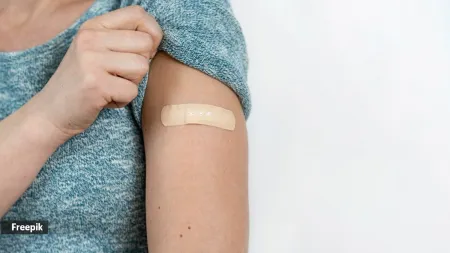If you use tissue paper to soak excess oil from fried foods, you are (apparently) doing it all wrong!
Kitchen hacks not just help save money and time but also enhance the flavour of your favourite foods. But, turns out that one of the most common kitchen hacks, popular across many households, is something that should not be done! Wondering what that is? We tell you.
If you use tissue paper to soak excess oil from fried foods, allow us to break the news to you: doing this makes the pakodas (or other fried items) soggy. Yes, you read it right. If Manju Mittal, a kitchen and home guide is to go by, “tissue makes the food go soggy”.

Is it so?
Agreeing, Dr Kiran R Dhake, wellness physician and sonologist, Mumbai said that tissue paper cannot regulate moisture effectively. “Subsequently, the fried food items may become soggy over time as moisture accumulates beneath it and may lose the taste,” said Dr Dhake.
Notably, tissue paper is a versatile commodity and offers a variety of functions in the food industry. However, if tissue papers are used indiscriminately and inappropriately, it shall lead to the following concerns.
According to Dr Dhake,
Health hazard: Paper handkerchiefs or kitchen tissue papers are not designed to store food. “There is a high probability of migration of the chemical substances from tissue paper to food items. Such food is unsafe for consumption and may pose a health risk,” mentioned Dr Dhake.
Change in the consistency and texture of the food: If food items are stored using tissue paper over relatively long hours, they may lose the crispy consistency and may not retain the smoothness and flavour, added Dr Dhake.
Environmental impact: Inappropriate disposal of the tissue paper material after using it leads to environmental concerns – such as blockage of the waste transport system, water pollution, and solid waste.
Fire risk: According to Dr Dhake, if tissue paper material consists of acid substances, it makes it more vulnerable to catching fire. “If deep-fired food is placed on such type of tissue paper for a long time, it increases the risk of fire hazard. If tissue papers are subjected to fire, it may emit toxic fumes leading to air pollution,” said Dr Dhake.
 Do you also use tissue paper to soak fried food? (Source: Getty Images/Thinkstock)
Do you also use tissue paper to soak fried food? (Source: Getty Images/Thinkstock)
What can be done?
Usage of paper towels or oil-absorbing mats: It is recommended to place fried food items on the wire rack or absorbent paper towels or specially designed oil-absorbing mats for some time to drain excess oil before transferring them to a plate or serving dish. “This helps maintain crispiness while allowing excess oil to drain,” said Dr Dhake.
Use air-tight containers: An air-tight container is one of the safe alternatives if you need to store fried foods for later utilisation. Airtight containers are leakproof and prevent spillage. “If they are lined oil-absorbing towels, it helps to maintain not only their freshness, and texture but also prevent food contamination and entry of foreign substance from external sources. It is advised to avoid stacking fried foods on top of each other to prevent them from becoming soggy,” said Dr Dhake.
Paper bags: The paper bag is a suitable choice – multipurpose, less expensive, and easily accessible. Paper bags have high durability, and are breathable – prevent moisture by allowing air to circulate maintain crispiness, and retain flavour while keeping pests or any other external sources at bay.
View this post on Instagram
A post shared by Manju Mittal | Your Kitchen & Home Guide (@manjumittal.homehacks)
Air drying process: The air drying process can be practiced to allow fried foods to air dry on a wire rack for a certain duration i.e., a few minutes only, before storing or serving. “This helps remove excess oil and prevent dampness of the food item. Please be informed that excessive air drying may lead to loss of crispiness and become difficult to bite,” mentioned Dr Dhake.
If these tips are implemented, one can preserve the quality, consistency, and appearance of food items without compromising health and environmental safety.
Disclaimer: The copyright of this article belongs to the original author. Reposting this article is solely for the purpose of information dissemination and does not constitute any investment advice. If there is any infringement, please contact us immediately. We will make corrections or deletions as necessary. Thank you.





